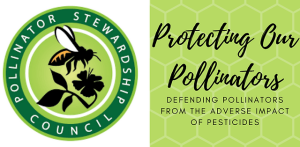by Christi Heintz and Meg Ribotto, Project Apis m.
The Honey Bee Forage and Nutrition Summit, sponsored by USDA, was held October 20-21, in Alexandria, VA. The Summit was postured to seek input from stakeholder groups on issues concerning the interaction of nutrition and available forage on honey bee health. The Summit was organized and hosted by a true friend of the honey bee, Dr. David Epstein of USDA’s Office of Pest Management Policy.
Day 1 consisted of a series of presentations aimed at honey bee forage and nutrition, and to provide background for Day 2, when participants provided input by participating in one of four assigned work groups.
Zac Browning, American Beekeeping Federation and Project Apis m board member, provided a dire view of honey bee habitat in the US. The impact of habitat loss is seen in decreased honey production, with US honey crops the lowest in history. Browning emphasized bees require 200 lb of honey and 40 lb of pollen per colony per year just to survive and factors such as increased soy and corn acreage, the decreased quantity and quality of Conservation Reserve Programs (CRP) lands, increased herbicide use, more efficient farming practices, and limitations imposed by pesticide use, all serve to decrease available flowers and forage for honey bees. Honey bees, the very backbone of agriculture, are in trouble. The unique delivery system for bees to agricultural crops – the beekeeper – is also in trouble.
An impressive slate of researchers followed Browning’s presentation, emphasizing the important role of nutrition in honey bee health and in mitigating the impacts of pests, diseases and even pesticide exposure.
Presentations by government representatives were somewhat disheartening. The Department of Defense, manager of huge acreage in the US, was a no-show. The National Park Service, understandably, wants to keep its lands pristine and would only consider “manipulated” or urban areas as suitable for bees. Urban areas, of course, are not suitable for commercially managed bees. The Bureau of Land Management (BLM) and the Forest Service will consider apiary locations on a case-by-case basis, but 85% of BLM offices surveyed didn’t know whether or not they even provided apiary permits. Let’s hope the President’s White House Initiatives hold some hope for bees on our public lands!
In discussions about honey bee forage, beekeepers made it clear they wanted to be at the table when it came to making decisions about plant species and land use. Government decisions made at the regional level that have excluded yellow sweet clover were called to question. “Sweet clover is cost effective, bees love it, and it’s good for them”, said Randy Verhoek, American Honey Producers. “Why is it classified as invasive?” he continued, when questioning how these bottom-up, sometimes subjective, regional decisions are made. Bret Adee, South Dakota beekeeper, stated that herbicide use on sweet clover growing in roadways and ditches eliminated a critical food source for bees since bees are so dependent now on marginal lands for their food. Dr. Marla Spivak summed it up on Day 2, “Bees are in crisis. Beekeepers need sweet clover now”. No doubt one of the next research avenues as a result of the Summit will be identifying high quality honey bee nectar and pollen sources that fit well within goals for a an overall healthier environment. Unlike the report on the Varroa Summit that seems to have been lost somewhere in the halls of USDA, Dr. Epstein has personally promised timely reporting on the Forage and Nutrition Summit.
If bees and beekeepers are to survive, affordable seed mixtures and incentives for landowners, even those not needing pollination services directly, must be developed to increase honey bee forage opportunities. Bees, beekeepers, their honey crop, and the over 90 crops dependent on honey bee pollination, cannot survive on a ditch diet alone.








